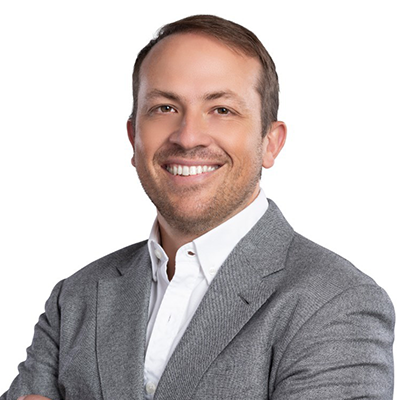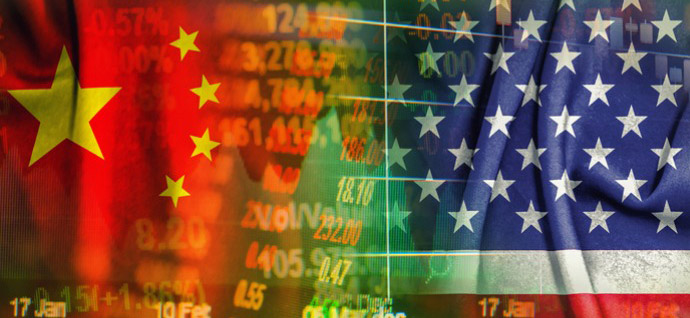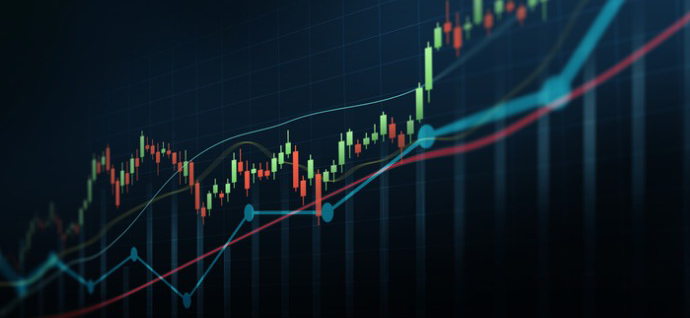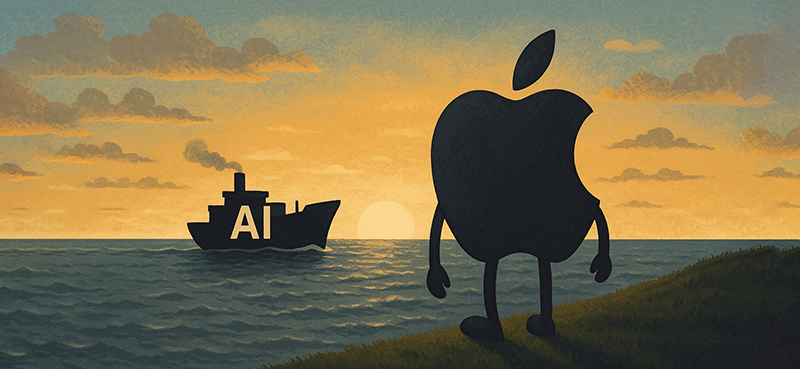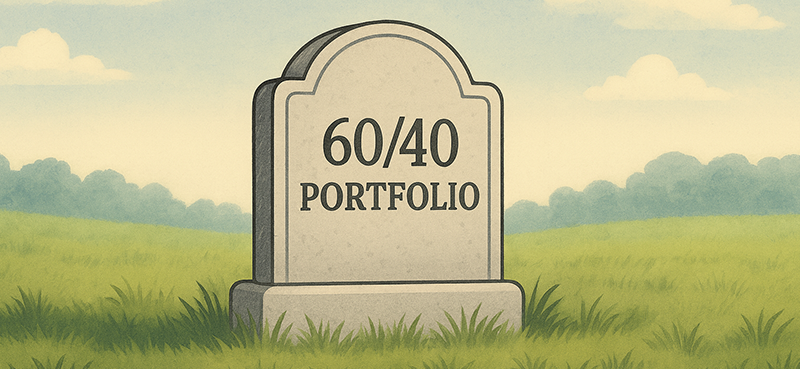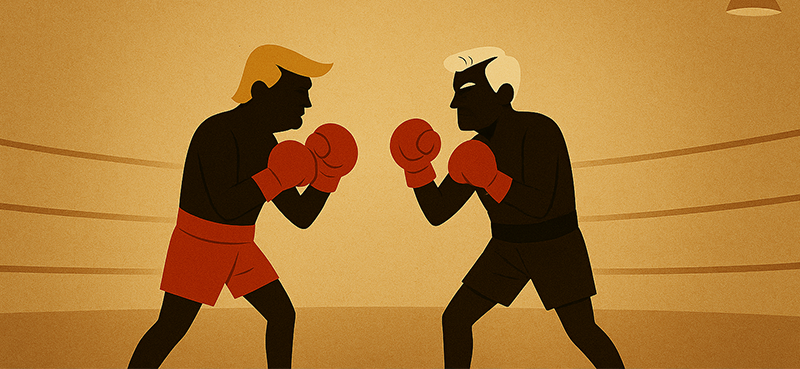Jamie Finn, co-founder of Securitize, joins Frank in a video interview exclusive. Finn explains how digital securities allow investors complete control over their portfolios… along with higher yields.
Plus, why bitcoin’s record high benefits everybody… and the massive potential of tokenizing the trillion-dollar real estate industry.
STO Unplugged | 4
How to make a fortune in the security token revolution
Frank: Jamie Finn, thanks so much for joining us. Yeah, I know how busy you are, man. I really appreciate it. What’s going on?
Jamie Finn: Oh man, it’s been quite a year, I would say. I’ve been spending a lot of time at home now.
Frank: I think we all are these days, right? It’s been pretty crazy.
Jamie: Yeah, that’s definitely true.
Frank: A lot has gone on. We’ve known each other for a while now. We’ve seen the growth in security tokens. But before we even start, let’s go over details of what Securitize does, what you’ve done for us, which is an incredible job, not just companies, but it comes down to debt offerings or tokenizing assets. But talk about exactly what you guys do, and why you’re a leader in the industry.
Jamie: Sure. So we started this journey in 2017 and really had the idea that creating a native digital asset would be a fundamentally better asset for people to own and to trade. And so, as we went down that path, we rolled out a whole variety of different services, and we’ve kind of built these up organically. You’ve definitely been a part of that from the very beginning where, you know, now we offer a product suite that’s really investor onboarding in management, all of the KYC and AML checks that need to happen for investors. We became a registered transfer agent with the SEC in the U.S. to manage cap tables on behalf of companies and pay out dividends and distributions, which we do today, and actually pay out dividends in dollars and in cryptocurrencies, which has been actually surprisingly well-adopted. We thought it would be a smaller piece, but we see it’s over 80% of most of our issuers payouts.
Jamie: And then recently, as we went down the path of creating this new kind of technology, which I would really compare it to the digitization of music, we’re kind of digitizing what is traditionally been a paper product and making it into something that you can actually own and trade with somebody. And as we went down that path, and just a few weeks ago, we actually announced that we acquired what’s known as a broker dealer in the U.S., and also in ATS, which is a trading system, automated trading system. So, we now have kind of a whole compliment of different licenses here in the U.S to help issuers or companies kind of issue securities, raise money, and that even trade securities on a secondary market.
Jamie: And so, it’s been quite a busy three years to go down the path and go from a pure software vendor selling technology to becoming a fully regulated multi-country operation. We operate here in the U.S, and we also have a large operation in Japan, where we work with a lot of the large Japanese banks on a variety of different technologies. And then we have customers all over the world, really. So, it’s been really fantastic.
Frank: Talk about the last 12 to 18 months, because we’ve known each other for a while, and like I said earlier, and we’ve been through this process with you. And at first, of course, it was difficult, it was new. I got a little nervous of COVID, I thought I’d push it back. What’s going on today that has you really so excited that, hey, you know what, we all made the right move here? We feel much more comfortable, at least I do, compared to, you know, probably January, February, right before COVID. I saw this trend picking up even more, but now, it seems like, you know, even in announcements that you just mentioned, we’ll get in more detail because, clear game changer with the licenses that you guys just got, it’s in the news. But talk about that development, what you’re seeing now that has you maybe so excited, or maybe even worried about the industry.
Jamie: Yeah, I mean, look, I’ve been excited about the industry from the get-go because… I’ve been investing in private companies for almost a decade now. And in not just companies, but real estate, a whole bunch of different alternative investment schemes. And what I’ve seen and kind of what’s been happening is, as a normal kind of investor on the street, what you’re investing in is usually packaged goods, as it were. And you can’t actually invest in the ingredients. And what happens is, when you’re buying packaged goods like that, you don’t necessarily have the control to be able to tune your portfolio to exactly what you want. And so, with these digital securities, or security tokens, that have now come to market, you have the ability to create your own portfolio. Whereas previously, investing in your company, Frank, would have been really difficult. Probably the only way to get in would be through a VC. Whereas, you are able to launch a portal and take investment from folks you knew, and market the offering accordingly, and let those people opt-in, and become investors.
Jamie: And that direct one-to-one relationship is really what’s different. And so now, what excites me the most is, I can now have direct one-to-one investments in all sorts of new types of assets without middlemen in the middle, that are taking cuts of the margin as we go. So, for example, we have one customer who’s doing a note on construction financing, right? And normally as an investor, if you’d invest in that through Merrill Lynch, or somebody else, or Goldman, you’d get, you know, maybe 8%, if you are lucky. But in reality, that note is paying 10%. And you don’t have access to that because they have all their fees locked into it.
Jamie: And so, by permitting you to have a direct one-to-one relationship with the company that’s actually doing these things, it allows you to invest directly and reap the 10% yield, as opposed to getting cut down to 8%. So, as with most things technological, it’s really gonna end up becoming about dealing with the middleman and taking them out of places where they’re not creating value. Obviously, if they are creating value, then great. But if they aren’t, then they shouldn’t be there, and they shouldn’t be collecting a fee just for being there.
Frank: No, it definitely makes sense. And talk a little bit about… We’re in this industry, so talk a little bit about what assets can be tokenized? ‘Cause people familiar with me, our CEO token, you’re getting an equity stake. Plus, we picked to pay a dividend. We intend that to stay, we intend on paying a dividend going forward, a quarterly dividend, which amounts to an annual of pretty much more than what the S&P 500 is paying. But it’s not just about our company. It’s about… Talk about the tokenization, of what assets can be tokenized because it basically comes down to almost every… It’s just selling a piece off of an asset. And a lot of these assets are liquid, like our company was.
Jamie: Yeah, exactly. It’s one of the most common questions I get is, what can we tokenize? And I’m like, okay, well, what’s your idea? Let me tell you, we’ve seen all sorts of wild things out there. There’s some companies that are doing interest in cars. They look like really high-end vehicles. We’ve seen things like gold, obviously being tokenized. We’ve also seen wine get tokenized. But in reality, most of the things kind of fall into a few different buckets. They fall into equity in a company, so that could be, for example, what you did, or the investor simply gets interest and becomes a shareholder of the company. You have other ones, which are funds. So, we have a number of different types of funds, both hedge and venture funds, that have been tokenized. And these make what is essentially illiquid asset class of venture capital into a liquid asset class.
Jamie: Normally, you’re locked up for 10 years, seven to 10 years in these deals, whereas now, with a liquid fund, you can enter and exit as there is liquidity in the market, kind of develops around that, which we’ll talk about later. The other thing we see a lot of is different types of real estate structures. So you can invest into an actual, directly into an asset. So one building, one property, and take the kind of returns from that. Normally ,that type of investment is really reserved for extreme high net worth family office type investors, where they would buy into like an office complex or a mini-mall or something like that. That’s normally a really difficult asset to get into because they don’t wanna deal with a lot of investors. So, this allows you to invest. So, those types of vehicles of which we have a lot of. And then, we have some really interesting things, like we have Spencer Dinwiddie tokenized his NBA contract, which got a lot of press.
Frank: Did that go through? That went through?
Jamie: Yeah, yeah, that went through.
Frank: God, that’s awesome.
Jamie: That’s out there. He’s gonna have holders. It’s paying the dividends exactly like it said.
Frank: That’s amazing.
Jamie: Yeah, we’ve seen other folks tell them it was revenue streams. So, if you have like an asset that’s gonna yield some specific revenue or has been yielding revenue, you can just sell that to investors. We have a customerlottery.com that did that, where you get a piece of a global charity raffle that they operate, which had been rolling out. So, there’s a lot of flexibility in what you can do. In fact, right now, we have one that’s doing receivables, so you can actually buy directly into the receivables. It’s an asset class you could never invest into normally. It’s packaged up in 15 different ways.
Frank: Yup.
Jamie: In this one, you can look at the site, CBAPR, and just pick which one you want to invest in, and you’ll get a monthly payment from them. So, it really offers a whole bunch of new functionality, but also for the investor, it’s just a better experience because you actually hold an asset. So, it’s not like a piece of paper or a spreadsheet, where somebody can just kind of fat finger and screwed it up. This is stored on a cryptographically secure ledger. So, there’s millions and millions of computers that know that you own that share, and nobody can change it. They can’t say, oh, instead of owning a hundred shares, you own one share, or just erase you from the cap table, they can’t do that. So, this is a really powerful technology, which is forces transparency and really makes it so that the investor’s investment is totally secure and safe. So for me, it’s just a fundamentally better product.
Frank: Yeah, you know, that brings me to today’s action in Bitcoin. It’s approaching new highs, 18, 19,000, you know. It’s gone straight up, especially with the past couple of months. We see what’s going on around the world. And that’s different from security tokens where, of course, you get equity stake. However, it is kind of linked together, even though you and I probably don’t want that link together ’cause we see a massive difference between, especially utility tokens, not just Bitcoin, but more like the utility tokens out there. We don’t get equity stake, you don’t get anything. The only value is based on the utility, those functions you can use on our website. Most of these guys don’t have any revenue coming in or anything, and they trade at astronomical evaluations. But, with that said, we still get lumped in by the average person that’s learning about this industry, where it is a digital asset, it is kind of linked to crypto. Do you think that’s helping us in terms of Bitcoin and the whole digital asset structure? We’re seeing more hedge fund managers turn around and start believing in Bitcoin. But I would think that would probably be a positive for this industry, right?
Jamie: Well, it is. And I’ll tell you what’s really important is, when you see that type of money coming into the market, what’s happening is, all the tools for investors are getting better and easier to use because there’s now a reason to make an institutional grade product. So, Fidelity has a digital assets products. And they wouldn’t be in this space if there wasn’t demand from large institutions. And so, what we see and what these types of kind of bull market crypto runs do, is they drive a ton of interest into the space, which brings a ton of investment, which makes the experience better.
Jamie: And it’s really a virtuous circle for everybody because while we don’t do anything really with cryptocurrencies, except maybe some payouts on dividends, we use the same infrastructure. And so for that, the more that infrastructure is used, the more robust it is, and the more secure it is, which is something most people don’t really realize about blockchains is, the more people are using them, the more secure they are because there’s more nodes validating things. And it just makes it a lot easier for everybody ’cause you have to start to build a product that everybody can use. In early days, you know, in this space, good luck buying, you know, any kind of cryptocurrency, is impossible. Now, you can go to Coinbase, and with a credit card, in five minutes, you have, you know, an asset instantly. So that is really what we see at driving, is improving the infrastructure and making it easier for investors to get into the space.
Frank: Let’s talk… Let’s talk about the compliance front because I know that the work that you’ve done and, you know, the contracts that you’re getting overseas, especially in Japan absolutely amazing. It just seems like in these other places overseas, they’re adopting a lot more quicker than the U.S. But you mentioned earlier that you were able to get those licenses, which is SCC, FINRA licenses, which are, you can create an alternative trading platform. And I’ve saw that news pass for several other companies, which I, you know, there’ll be competitors to you, but it’s still good, even when people are launching tokens, it’s great for the industry, right? What has changed in terms of compliance that’s allowing this to happen? Because it definitely is a switch, where it was really, really difficult. Now, it seems like I’m seeing more positive news on a regulatory front and, I guess, another question is, the new SCC chairman coming in, I guess that’s going to be kind of a big deal, right?
Jamie: Yeah, we’ll see. You know, Chairman Clayton was obviously quite positive on the space and really tried to move it forward. We’ll see what happens with the next one. We don’t know who that’s gonna be, so that’s TBD. But, you know, I think the, from, from the regulatory point of view, when you really dig into this stuff, it’s so much better to have it done in software as opposed to have humans interact with it. And I’ll tell you, like, I met… So, in our space, yes, you’re correct saying there’s a lot of ETS’s out there. We aren’t… We don’t see them as competitors, actually, because arbitrage between the different systems creates liquidity, which is really the ultimate goal for issuers. So an investor may come on one platform or another, but they’re gonna trade, but if there’s a price differential, you’ll have arbitrage which will drive liquidity. But you know the thing that impressed me the most is how, with software, we can enforce compliance programmatically without having to have people review everything. So, I met with some of our colleagues in the transfer agent space, and we operate, you know, a digital transfer agent. We don’t do, you know, normal kind of TA stuff on paper and with stamps on them and things like that.
Frank: Regular stocks are digital too. A regular stock is digital too. When I get to private placement, it’s all digitalized. Yeah, go ahead.
Jamie: Yeah, exactly, 100% percent. And that’s the… So, you know, in our world, is, we go to digitize this kind of private securities. What I see is how painful it is for these TAs to actually process things and manage them, and how they have to have people sitting in an office waiting for a FedEx to come through with the printed shares certificate so they can stamp and cancel it. And that is preposterous, right? Because, like, with software today, it’s really straightforward to update a cap table with the right amount of shares and pay out a distribution. Like, it’s not rocket science, as my co-founder will say quite often. But the reality is, doing it in a way where you abide by each and every country’s regulations, and you understand that, like, an American is selling to a European and the rules are different there versus a Japanese investor who’s invested in an American offering.
Jamie: How many investors can you have in that deal? So there’s a lot of nuance in the compliance side, but all of that gets programmed into software. So instead of having to go and ask the lawyer 1,500 times, like, can I make this transfer, can I make this transfer? You just, you know, put it into a piece of software. It will basically tell you yes or no. I can move this token or I can’t. And at that point, you know, you have, you know, really solid solution, which meets all the regulatory requirements and is auditable. So you can go back in time, and you can look at every single one of these transactions because they’re stored on a blockchain. So, it’s better from a regulatory point of view to have this data there.
Frank: No, it definitely makes sense. And, I mean, just looking at this industry as a whole, if I had asked you this, on a scale of one to 10, how do you feel about the industry today compared to how you felt maybe 12 months ago?
Jamie: Well, I would say that right now, we’re kind of in a three, and I think we’re going up to a seven. So, you know, we’re growing quickly. We’re in that phase where we’re just gonna start to see real mainstream adoption. And we’ve seen like, you know, when you have customers that have large institutions as like education, universities, and things like that investing in their deals, and that’s where you’re really starting to see the adoption. When institutional investors, like universities, will come in and put money into the deals, or you can invest through your IRA, or you can invest through your investment advisor, wealth manager, like all of that tooling is now getting out there to enable much, much easier distribution.
Jamie: And, again, this gets back to the earlier point of, you know, folks like Fidelity getting into the space, where they’re gonna push the adoption of this tech into the RAs, because they have to do it, and the wealth managers have to learn about it. There’s no more options. And so, that’s where, you know, we go from three to seven, and I think we’re really starting to hit, you know, 12, 13, this time next year, once there’s enough liquidity in markets to really drive engagement. And you have to remember, like, most of these assets were issued less than a year ago. And so, they’re pretty much locked up for a year. So you’re not going to have a ton of liquidity. I think there’s maybe 12 securities right now that could trade. And so we’re seeing that, you know, things are kind of ticking over. And so we’re seeing, you know, more and more assets come to market. And as that happens, you’re naturally gonna have more and more liquidity.
Frank: And what about you, if you can’t talk about this, it’s perfectly fine, but you know, your pipeline. Like, how does your pipeline look where, you know, I guess anyone could call you and say, hey, we wanna do a security token. I know you’ve met these people, and you’ll know like I know in the first 15 minutes whether it’s for them or not, right, and you won’t waste your time. But some of them are legit calls. I’m getting from big bond fund managers, billion-dollar hedge funds, that have been calling me. What does the pipeline look like, especially in terms of the last six months? I mean, are you see it growing? Is there more excitement? Because that’s what’s coming out, where most people just see, you know, like you said, well, there’s 12 issues right now, and there’s more coming out. But you are, like, at that point, especially Securitize leader in the industry, where you see a lot of this demand coming, right?
Jamie: Yeah, I mean, we’ve announced that we saw, you know, over a hundred, but we have over 130 customers, and we’re actually over 150 now. So you know, that market, you can see, is growing quickly, and we’re, you know, expanding our service offering to incorporate some different types of issuances. So, you know, we’ve been working with Republic, which is a crowdfunding site, ’cause crowdfunding also just got amped up, which is going to drive this space dramatically. And so, we started working with them last year and, you know, we have, probably 50 issuers on there now. And that’s gonna grow there’ll be, you know, I would say upwards of 60. Next year, we’ll have hundreds of reg CF companies that are growing, raising more capital. They’ll go from the Reg CF, they’ll have to do a reg D.
Jamie: So, you know, all those companies as they go and continue to raise funds, they’re gonna keep, you know, they’ll have… What’s really cool about our tech is, once you use it to raise, you have all your investors information. Everybody’s there, and then you can continue growing that base and marketing to them. So, that’s the tooling that’s there, that the big fund managers starting to realize, is that the ability to avoid kind of NIGOs, are kind of where you lose information about the investor. And when you lose this information, it becomes a real problem because then you have to deal with all sorts of problems, like with the word that I had to learn, which was a shipment, which a state can actually recapture something from you, which blew my mind. But nonetheless, you keep track of who owns what, then it’s easy to tell them, hey, you know, we’ve got this new round we’re gonna do, would you like to invest in it?
Jamie: And by the way, they’ve seen your performance over the last year or two that you’ve been running. So they know what they’re investing in. You’re building a relationship with them, which is really important. And actually, one of the things, sorry to plug a product a little, that we brought out is actually the CRM tool. So now, integrating into the dashboard, you have the ability to email all of your investors, see their response rates, you know, slice and dice the data, and kind of sub-target them. And this is something that hasn’t really been seen before in this space, in a way that you have investor onboarding management, and then all the CRM in a fully integrated experience, that reaches all the way out to the wealth managers. So it’s not only the blockchain component, it’s the full digitization and experience. It gets packaged up into one solution that really I think is what makes the market happen so quickly.
Frank: No, I agree. And we talked about some of the negatives, right? We wanna see more liquidity, we wanna see more of these things come out, and we’re going in the right direction. But I was wondering if you could explain, because from what I see, and I cover all trends, you know, all technology trends, I’m fortunate to cover all different industries, I go to the Consumer Electronics Show for last 10 years, able to get into things three, four years before people even hear of them. When I look at this industry and I see the upside potential, which is what you want to see, right? When you invest in something, what’s the best case scenario? It’s always going to be super optimistic, right, depending on who you’re talking to.
Frank: But if you’re looking at the amount of assets in the real estate industry that are illiquid right now, or that could be tokenized, we’re talking about tens of trillions, of tens of trillions if not hundreds of trillions. We’re looking at the bond industry, which, you know, if you could look guys, when Goldman Sachs, JP Morgan, Morgan Stanley report their numbers, they blow it out of the water when it comes to their bond department, because they charge the most fees because it’s not a liquid industry right? And that’s why bond managers are probably reaching out to you, they’ve reached out to me and said, listen, we want another way ’cause these middlemen are killing us. And we’re looking at, again, trillions, and a trillion dollar industry. Is it crazy to look at that? ‘Cause when, you know, we throw around trillions because there’s like a stimulus package every three months now that are trillions. But when I look at a market like this, I don’t think I’ve ever seen a market that big, or could be this big, if this happens to get adopted and be successful.
Jamie: Yeah, yeah. I mean, the private, kind of, the private securities market is humongous, right? It’s 30, I think it’s $33 trillion, like you said. I mean, it’s absolutely massive. I mean, I had an… I actually had a phone call from a hotel chain, and they’re kind of looking at the space, and they’re kind of saying, well, you know, things, aren’t that great right now, but this isn’t a forever thing. And so, this is a trillion dollar hotel chain calling and being like, this might be a better solution for us to manage all of our investors and get liquidity into the, you know, different food chain.
Jamie: And so, if you hold a ton of assets and have a ton of investors, there aren’t really a lot of ways to deal with that without going full blown public. And so this allows for that a space, where they still have control and they’re not fully public, but at the same time, they have all the same features and functionality of a public company for their investors and for investor management. So that, that’s what I think what we’re starting to see. Absolutely, like, the trillion dollar deals are definitely being done. So, I think real estate is gonna obviously be the biggest one in the medium term. But you know, like I said, we see these direct assets being humongous because a lot of the family offices are looking for direct exposure to assets they can’t get through their current kind of wealth management arrangements.
Frank: And you talked to a lot of those people as well, ’cause I’m talking to them too, where the alternative asset, where Fidelity might mandate, hey, we need, you know, 1% of their assets to be into, you know, this alternative investing or whatever that could be crypto. And people say, well, that’s 1%, but they manage whatever six, 7 trillion, whatever it is. And then they’re mandated to do this, to look for… Because I’m hearing from family offices, as well, where they’re like, hey, could you pitch us? So, you know, we’re interested in your company and see what’s going on. We’re interested in this space, but I’m getting that a lot more than ever. Are you seeing that on the institutional level? I mean, you mentioned a little bit before, but I was just curious now that now you just spoke about it.
Jamie: Yeah, yeah. I mean, for sure. And it’s also coming in really interesting ways. I think a lot of folks are interested in kind of ESG, you know, any sort of environmental, social, good type of investments. And this happens to be a great way to invest in ESG. So you think about, like, something like carbon credits, like we talked earlier about, you know, interesting assets, carbon credits are really fantastic. I’ve had someone pitch me the other day on carbon credits as a way to reduce pollution because you would buy the carbon credits and not sell them. So you would hold them.
Frank: Al Gore knows all about that, believe me.
Jamie: It was a whole strategy that they had deployed around that. And they’re looking, I mean, on both sides, they’re looking to invest in it. We have some large banking partners that have selected our platform, which we haven’t announced yet, but we will in due time, and they’re coming to us and saying, you know, give me every ESG deal you see. And it’s, you know, everything’s a carbon credits to chunks of the Amazon to, you know, all sorts of really interesting social good initiatives around charity. We have a group in Ireland that’s doing a pilot. Now with charities, we obviously have a lottery.com, which does a charity raffle. So, you know, that space is massive and it’s gonna grow humongously. The investors want a direct relationship with the companies themselves. They wanna know exactly what they’re buying. They don’t wanna end up in like a, you know, in some sort of package solution that all the money is going to like The United Way, and none of the money is actually getting to the people who do it.
Frank: Carbon credits, amazing. So, so Jay, we’ll end on this. If someone wants to more about you, more about Securitize, you know, again, you guys have done an amazing job for us. I’m so glad we’ve partnered with you. We definitely made the right choice, but how could they do that?
Jamie: Yeah, so first of all Frank, happy to have you as a customer, thanks so much. Just did a renewal, so that’s good news.
Frank: Still got to hang out with me a little bit longer.
Jamie: So, I mean, the best way is Securitize.io, which is our website, instead of .com, it’s .io. And you can go there. We’ve got a ton of information up there. There’s, you know, instant chat, you can talk to somebody, or you can sit at one of our forums, and we’ll have one of our folks get in touch with you quickly. That’s really the best way. And you can, if you want to email me personally, feel free to email me at jamie@securitize.io. And yeah, thanks so much for the time. Really appreciate it.
Frank: That’s perfect, man. Thanks. If you need anything, let me know. And again, we appreciate it. Partnering with you guys, you’ve done a fantastic job, and thanks so much for coming on, man.
Jamie: Thank you.

